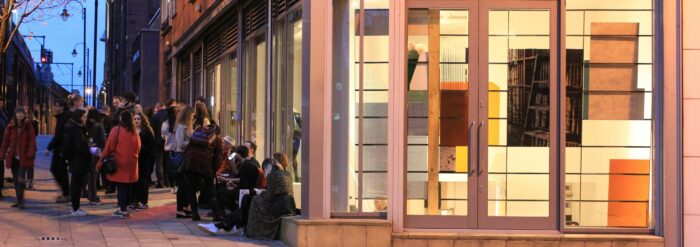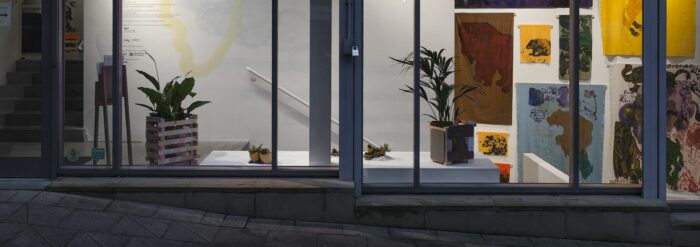‘New Paintings’ – Gary Wragg
‘New Paintings’ – Gary Wragg
02 November 1984 - 08 December 1984
The next exhibition at the Castlefield Gallery brings work by the highly regarded London-based painter GARY WRAGG back to Manchester – his last exhibition here was in 1979 at the old Peterloo Gallery.
The abstract look of the paintings in this show should not be interpreted as hedonistic gesturing but rather as serious and sensitive efforts to depict physical forces at work.
The paintings contrast flat, dark, quiet areas with agitated ones – calmness contrasted with energy. They also balance areas, which recede with drawn marks that push out towards the newer. By contrasting action with calmness, pulling with pushing, Wragg starts to make paintings which convey not what things ‘look’ like, but what it feels like to move around, to have forces exerted upon you.
These paintings are very original, very serious and a careful look at them is a rewarding experience.
Come along to our Private View on Wednesday 31st October at 6pm (or earlier by arrangement). Enjoy a glass or two of Halloween Punch and meet the artist himself.
MORE ON GARY WRAGG:
Gary Wragg’s paintings relate very much to internal bodily sensations such as those of walking, jostling in a crowd, waking up or simply breathing – things that we either can’t see, or sense rather than see, and don’t ordinarily need to think about particularly. He has thought about them in terms of ancient Chinese Taoist ideas which involve three basic pairs of combined, complementary, opposite qualities – full and empty, open and closed, and positive and negative. For the Taoists, and for Wragg, these are qualities that run through everything, in nature, and in most everyday human activities.
Because he is a painter, and not a philosopher, he applies these ideas to the process of making paintings. Using the particular qualities of paint – its varying thicknesses, different intensities of colour – and using a combination of marks which sweep around the surface of the paintings, or cross and tangle in many layers of paint, he gives, in visible form, his response to sensations of weight, balance, movement, circulation and energy.
These are paintings which may take some getting used to – but give them time, let your eyes follow the interweaving of marks and colour. After all, as the poet William Blake wrote, “Energy is eternal delight.”

